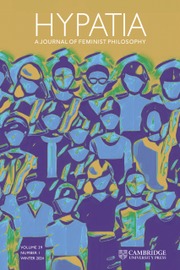No CrossRef data available.
Article contents
Gender and the Biopolitics of Public Order: Notes from Spain
Published online by Cambridge University Press: 09 December 2024
Abstract
This paper critically addresses the logics of exceptionality inherent to emerging regulations of the gender field, with a focus on Spain’s recent self-determination-based regulation of gender. To achieve this, it offers a biopolitical analysis of the concept of “public order” and its influence on gender governance, drawing parallels to Agamben’s concept of the state of exception and exploring the connections between contemporary regulations and the gendered public order of nineteenth-century France. Finally, it analyzes the exclusions and restrictions that the Spanish trans law reserves for migrants, non-binary people, and minors, contributing to the ongoing discourse on the limitations to gender autonomy in contemporary Western societies.
- Type
- Article
- Information
- Copyright
- © The Author(s), 2024. Published by Cambridge University Press on behalf of Hypatia, a Nonprofit Corporation


